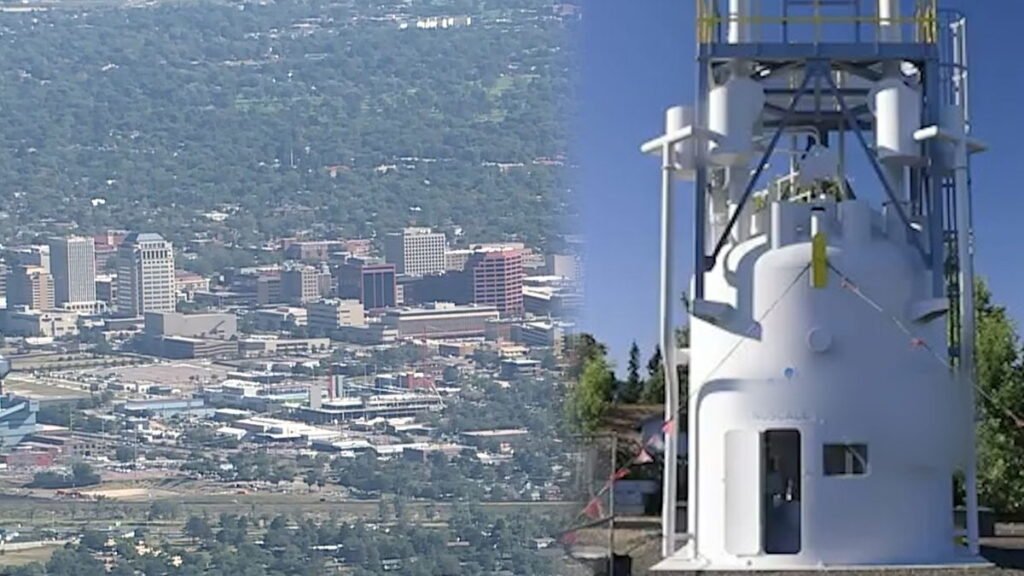COLORADO SPRINGS, Colo. (KRDO) – Colorado Springs Utilities (CSU) says that they’re now reviewing the feasibility of adding a small nuclear reactor to their energy portfolio after an independent committee spent several months researching nuclear energy for them.
In June of 2024 the Utility Policy Advisory Committee (UPAC), a group made of volunteers that are not associated with CSU, was tasked with looking at the current state of the technology for nuclear along with permits, regulations, environmental issues, waste disposal and the cost analysis of a nuclear project.
Just this week the UPAC presented its findings to CSU
“We definitely think it is something that needs to be on the radar of Colorado Springs Utilities,” explained Kate Danner, the Chairman of UPAC.
The key finding was that nuclear would help CSU meet the carbon-free goals of Colorado, which aims to reduce carbon emissions by 50% statewide by 2030, and 100% by 2050.
The specific area of research by the committee was around Small Modular Reactors (SMR), which are fueled by uranium or other radioactive elements, and are efficient and highly “energy dense.”
“One of the advantages of those is that you can build onto [an SMR], so you can start with maybe like 50 megawatts [of output] and then add on different [SMRs] as your capacity needs increase,” explained Danner.
She notes that SMRs could eventually put out the same energy as the Ray Nixon Power Plant at the Clear Spring Ranch property owned by CSU, or what used to be the Drake Power Plant near downtown Colorado Springs, however, they would take up drastically less land, with no emissions.
Research also looked at construction and overall costs.
In their findings, UPAC listed the following companies as examples, showing the range of costs for an SMR project:
- NuScale: $12.9 billion dollars
- Conventional Plant: $12 billion
- Xenergy: $10.7 billion
- TerraPower: $7.4 billion
The study showed that TerraPower currently has a project that broke ground in 2024 in Wyoming, an example of a nearby state with a similar climate, that approved of a nuclear project.
Danner states that permits, regulations, and the actual construction of an SMR can take as long as 10 years, putting this kind of project in the long-term for CSU at the very minimum.
She also acknowledges that through their research, they did find that SMRs are a largely experimental technology, that has seen construction issues, or stoppages, in other states.
“It’s still considered a first-of-a-kind technology, at least with small modular reactors,” Danner explained.
They also believed that water usage that is used to cool off the reactors would not be a concern for CSU, nor would there be any roadblocks over mining for the fuel sources in the state.
In 2023, Utah Associated Municipal Power Systems (UAMPS) canceled a 9 billion dollar SMR project that had been in the works since 2012. The CEO of the utility tells KRDO13 it was mainly because of cost risk, due to the fact they had multiple investors.
“[The investors] wanted sort of guarantees on delivery and at that cost estimate and like, you know, we we can’t make that sort of guarantee. So that’s why in a nutshell we ultimately terminated the project,” explained Mason Baker, CEO of UAMPS. “That being said, we’re still seeing a need for nuclear in our members resource portfolios,” he added.
Investors, otherwise known as purchasing power agreements, or PPAs, can be made with other utility companies or private developers to knock down costs.
Danner says local partnerships could be made with companies like Xcel, Black Hills Energy, Tri-State or Nebraska Public Power, which already has a nuclear plant.
Currently, utilities or developers in Colorado cannot get federal funding from the federal government, because nuclear energy is not designated as “clean” energy.
However, there is a bill currently on the Colorado House floor to change that label. Danner says that UPAC was optimistic in making their recommendations from the report, considering that the bill is making its way through the state legislature.

